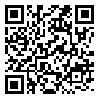BibTeX | RIS | EndNote | Medlars | ProCite | Reference Manager | RefWorks
Send citation to:
URL: http://irj.uswr.ac.ir/article-1-379-fa.html
Objectives: Cerebral hemispheres functioning have been found to be abnormal in children with ASD. The role of lateralization in implicit and explicit motor learning has received little attention in ASD researches. The main goal of this study is investigating the differences between two hands implicit and explicit motor learning in children with ASD and typical matched group.
Methods: In the present random clinical trial study, 30 boys with ASD aged 7-11 were compared with 32 typical matched boys. Typical group and the ASDs, which were screened with ASSQ, were selected from elementary schools in Najafabad (Isfahan, Iran). Participants performed a serial reaction time task (10 blocks) with each hand in implicit and explicit group with random allocation.
Results: Learning comparison between two groups showed significant difference which means explicit learning deficit in the ASDs with right (P=0.009) and left hand (P=0.004). Results also indicated no significant difference in implicit learning between ASDs and typical matched group in right (P=0.385) and left hand (P=0.18). Hands differences also showed speeded right hand in implicit learning in children with ASD (P=0.028) while no differences was seen in explicit learning and typical children.
Discussion: Explicit learning of right and left hand was impaired in children with ASD while implicit learning of both hands maintained intact and a right hand preference in implicit motor learning was observed in children with ASD due to left striatal system abnormality.
دریافت: 1392/6/27 | پذیرش: 1392/8/7 | انتشار: 1392/9/10



